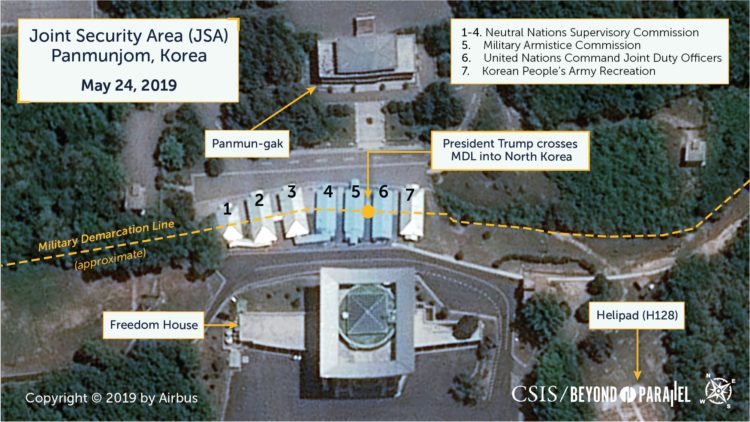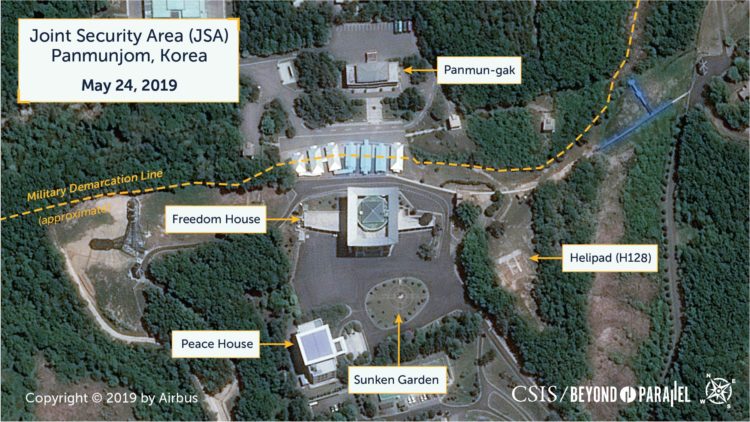
President Trump Crosses into North Korea
Key Points
- As the first sitting president in U.S. history to step into North Korea, Donald Trump’s action could be seen as a significant representation of the U.S. intention eventually to conclude a peace treaty.
- However, the event will only be considered “historic” if it leads to a final and fully verifiable denuclearization agreement; otherwise it will just be a photo opportunity.
- Going forward, a key indicator will be the success of working level negotiations. While Trump empowered his team, mentioning Stephen Biegun by name for the first time, and letting him stand at his side during the presser in Freedom House, it is still unclear who Biegun’s counterpart will be. Most likely, vice-foreign minister Choe Son Hui, who has deep experience on these issues.
- A freeze on North Korea’s nuclear operations is desirable, not as an end state, but as a first step in a process of full denuclearization.
- Furthermore, a freeze on production of fissile material, inspections of Yongbyon and Kangson, and a declaration are all desirable goals in the negotiation for the United States.
- Failure to achieve results this time would be concerning given that the significance of summits to energize diplomacy will be diminished.
- While the Panmunjom summit engenders some optimism, North Korea may be attempting to ameliorate international pressure with dialogue to gain sanctions relief, while eyeing the U.S. presidential election campaign.



